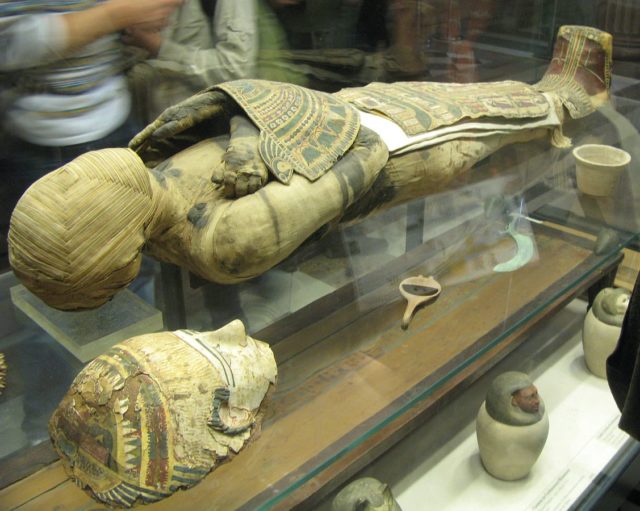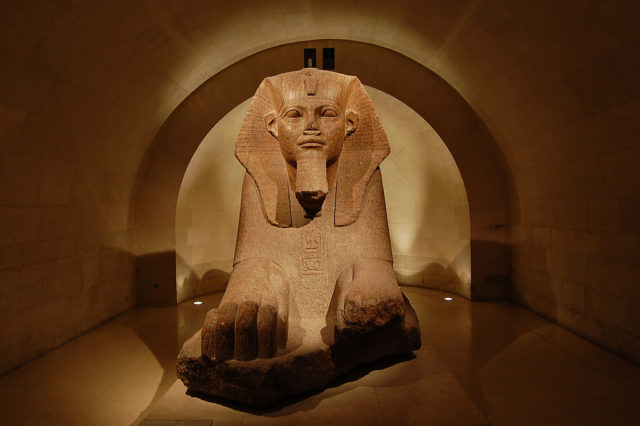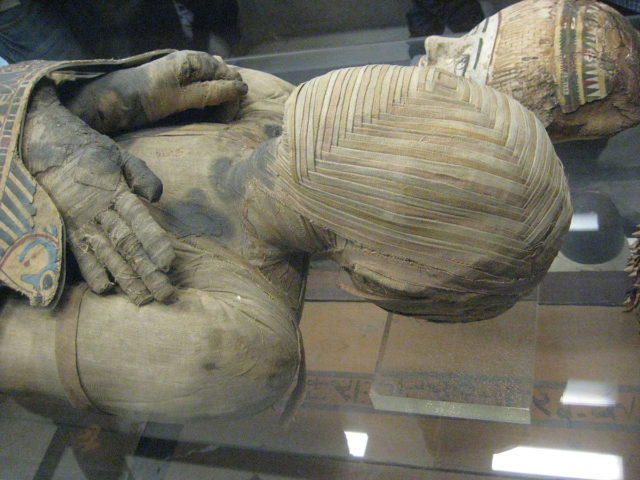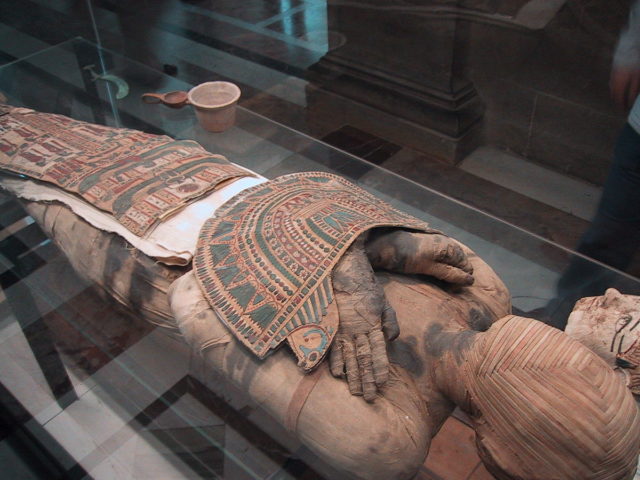Ancient Egyptian Mummy At The Louvre Has A Face Covered By An Unusual Interwoven Square Pattern
The Department of Egyptian Antiquities of the Louvre of Paris has a fantastic collection of more than 50,000 items. The collection includes various artifacts from the Nile civilization from 4000 BC to the 4th century AD. Being one of the largest collections in the world, it presents a complete picture of Egyptian life and customs from the earliest days of Ancient Egypt, through the Middle Kingdom and the New Kingdom, and the Ptolemaic, Roman, and Byzantine eras.

The collections available at the Louvre come from the Royal Collection and are being enriched continuously. The literary and artistic contributions of Dominique Vivant Denon as part of the Institut d’Égypte, commissioned by Napoleon during his Egyptian war from 1789 to 1801, play an essential role. After the expedition, Denon was assigned as the first director of the Louvre Museum and published a two-volume book ‘Journey in Lower and Upper Egypt,’ which marked the beginning of modern Egyptology.
Since its inauguration, the Department of Egyptian Antiquities’ collection has been replenished with new vital discoveries and new purchases of valuable objects. The entire department, guarded by the Crypt of the Great Sphinx, includes 30 rooms where visitors can witness authentic Ancient Egyptian art and jewelry, musical instruments, clothing, utensils, weaponry, or papyrus scrolls, among other things.
A complex mummy in its infinite sleep, maybe unlike any other mummy seen anywhere, lays among many authentic antiques.

The mummy in the Louvre is particularly impressive, thanks to its complicated head wrapping. In this exhibition, we can see a skull carefully encased in linen stripes with a geometric twisted square pattern that covers the entire face, unlike the usual winding wrap. Besides the attractive bindings, the cardboard applied to the rest of the mummy’s body features a neckband draped over the chest, a decorative apron on the legs, and a case on the feet.
According to the reports of the museum, X-Rays have revealed that the mummy was an adult who lived during the Ptolemaic Period of Ancient Egypt, which lasted from 305 BC to 30 BC. The period began with the rule of Alexander the Great’s General Ptolemy and ended with the reign of Cleopatra.

Scholars claim that the mummified man’s name was Nenu or Pacheri, but it’s still unclear. The excellent preservation of mummified man reveals that he was considered lucky throughout his mortal life, whatever his name was. According to the ancient Egyptian belief system, old burial procedures ensured his survival into eternity.
According to reports, Nenu or Pachery belonged to the upper-middle class. His main organs were preserved in jars except for the heart and the brain. The body was dried out in salt and then slathered with resin and fragrant oils before being wrapped in strips of linen cloth as part of the mummification procedure.

The striking neckband depicts the sister goddesses Nephthys and Isis protecting the mummy. Horus, another major Egyptian god, protects the organs in the jar.
We can see Anubis or Anpu, god of the cemeteries, and embalming at the feet. Described as a dog-headed man, he weighs the mummified person’s mind to determine whether his soul is allowed to enter the realm of the dead.
Egypt was possibly thriving in the golden days under the reign of Alexandria as the new center of knowledge and scholarship in the ancient world when this guy was mummified. Or it might be that Rome was already preparing to take control of the fertile plains along the Nile, albeit slowly and systematically.



